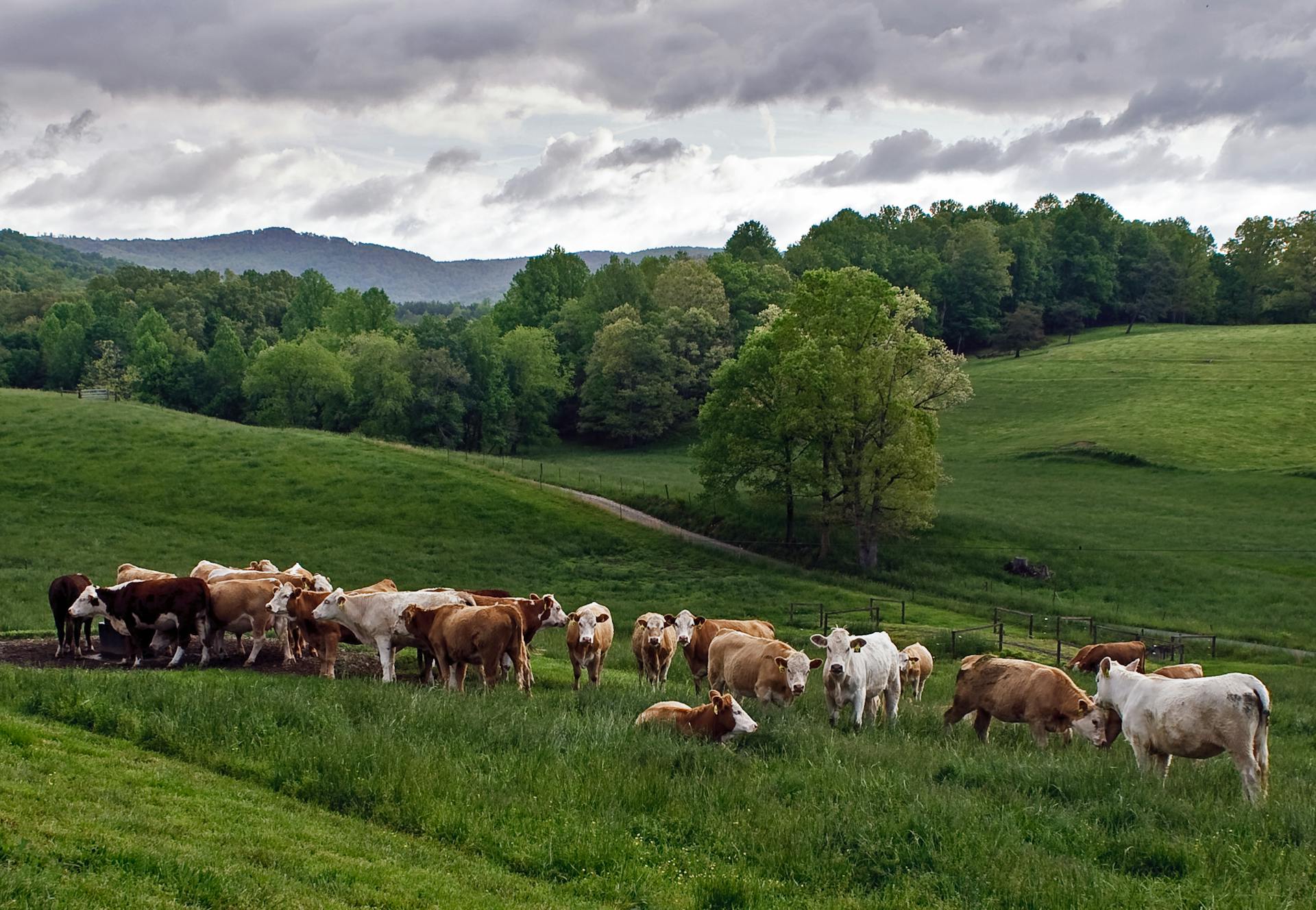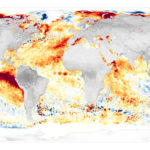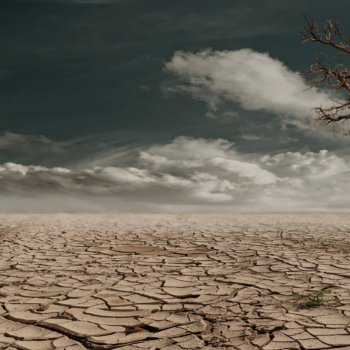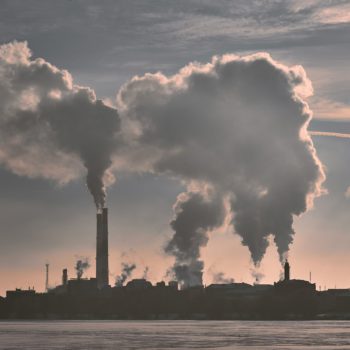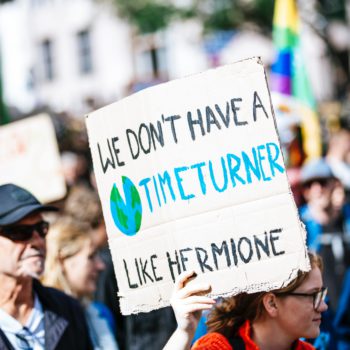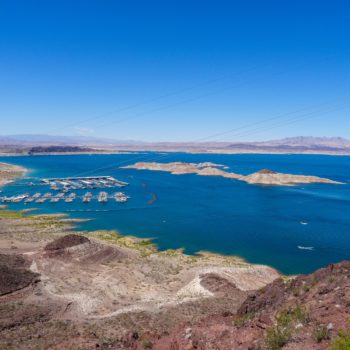|
|
The American agricultural landscape is facing a significant challenge as lower beef production, propelled by a decrease in cattle inventory, threatens to disrupt market prices. The American Farm Bureau Federation first reported this concerning trend.
A combination of climatic factors and economic challenges has culminated in a precarious situation for beef supply chains, with far-reaching implications for consumers and producers alike.
The Impact of Shrinking Cattle Inventories on Beef Production
The United States Department of Agriculture (USDA) has reported that the beef cattle inventory is at its lowest since 1948, a startling revelation that underscores the magnitude of the current crisis. The sharp decline in cattle numbers, particularly beef cow herds, has mainly been attributed to prolonged drought conditions in critical beef-producing states such as Texas, Oklahoma, and Missouri. These conditions severely limit grazing options, forcing many farmers to cull their herds prematurely.
Jacob Newton, a farmer from Hillside Farms in Truxton, highlights the dilemma many in the industry face, stating, “When you can’t have feed, you have to reduce your stock until that forage comes back.”
The consequent reduction in the herd size directly impacts beef production levels, setting off a chain reaction that inflates beef prices due to dwindling supply amidst steady demand. Currently, beef prices loom around an average of $5.00 per pound at retail outlets.
In an attempt to mitigate some of these challenges, the Newtons have made a strategic move to increase their cattle processing numbers from 37 to 42 this year. However, the challenge continues beyond raising more cattle; it extends to finding a processing facility.
New York, not traditionally known as a beef industry hub, presents significant hurdles for local farmers due to the need for more USDA-certified processors.
A facility making a difference in upstate New York is Owasco Meat Company. Co-owner Callan Space highlighted the ripple effects of the current situation, noting that the soaring cattle prices are a primary driver behind the impending hike in beef prices. “The costs are staggering at the moment, and we’ll inevitably see a further increase in beef prices in the months to come,” Space commented.
A Silver Lining
Despite the overarching challenges in the beef market, this scenario offers consumers a compelling opportunity to reassess their beef consumption habits, encouraging them to do their share in curbing climate change.
The World Resources Institute highlights the cattle industry as a major source of greenhouse gas emissions, stemming from both the agricultural production processes—including the digestion and waste of livestock and the cultivation of feed—and the deforestation for expanding pastures, which releases carbon stored in plants and soil.
The cumulative emissions from global beef production reached approximately 3 billion tons of CO2 equivalent in 2010, equating to the annual emissions of India, the third-largest emitter of greenhouse gases globally.
Furthermore, the organization points out that beef ranks among the most resource-intensive and emission-heavy foods available. Compared to other protein sources, beef requires significantly more land and produces greenhouse gas emissions sevenfold higher than chicken and twentyfold higher than beans for the same amount of protein.
Image Source: https://www.wri.org/insights/opportunities-reduce-emissions-beef-production
While choosing locally sourced beef may help lower carbon footprints by decreasing the distance the product travels, this benefit is relatively minor.
Our World in Data indicates that transportation contributes modestly to overall emissions. For the majority of food items, transport represents less than 10% of their emissions footprint, and this percentage is even less for the highest greenhouse gas-emitting foods. Specifically, in the case of beef from herds, transport accounts for a mere 0.5%.
Image Source: https://ourworldindata.org/grapher/food-emissions-supply-chain
With such data, the question is how can emissions associated with beef consumption be significantly reduced?
How Consumers Can Contribute to Reducing Beef Emissions
Consumers play a pivotal role in minimizing their carbon footprint, especially regarding beef consumption. By making informed choices and taking deliberate actions, individuals can actively contribute to emission reduction efforts. Here are some effective strategies consumers can implement:
- Reduce Beef Consumption: One of the most straightforward ways to lower the demand for beef and, consequently, its environmental impact is to eat less of it. Integrating more plant-based meals into your diet or participating in initiatives like “Meatless Mondays” can significantly reduce your carbon footprint over time.
- Switch to a Sustainable Diet: Switch to a Sustainable Diet: a sustainable diet involves considering not only what we eat but also how our food is grown, distributed, and packaged, as well as its overall impact on the planet. According to guidelines from the FAO and WHO, a sustainable diet primarily consists of whole grains, legumes, nuts, and a wide variety of fruits and vegetables. It may also include moderate amounts of eggs, dairy, poultry, and fish, with minimal consumption of red meat. A sustainable approach also emphasizes minimizing the use of antibiotics and hormones in food production, reducing the reliance on plastics and derivatives for packaging, and cutting down on food loss and waste.
- Choose Grass-Fed and Locally-Sourced Beef: When beef is a must-have, choose grass-fed, locally sourced options. Grass-fed beef often has a lower carbon footprint due to more sustainable grazing practices, and buying locally reduces transportation emissions. Although transportation emissions are a smaller piece of the puzzle, every bit helps.
- Support Regenerative or Sustainable Agriculture Practices: Look for brands and products emphasizing regenerative or sustainable agriculture practices. This approach to farming and grazing works to restore soil health, improve water retention, and sequester carbon, thus mitigating the overall environmental impact of beef production.
- Educate Yourself and Others: Staying informed about the environmental impacts of beef production and sharing this knowledge can influence others to make more sustainable choices. Public demand for sustainable products can drive industry changes, making environmentally friendly options more available and affordable.
Advocate for Policy Change: Support policies and initiatives that promote sustainable agriculture and environmental stewardship. This can range from local community efforts to national policies aimed at reducing the environmental impact of livestock farming. - Participate in Carbon Offset Programs: While not a direct way to reduce beef emissions, participating in carbon offset programs can compensate for your carbon footprint. These programs typically invest in renewable energy, reforestation, or other projects that reduce greenhouse gas emissions.
- Waste Less: Minimizing waste by buying only what you need and using all parts of the product can significantly impact. Food waste contributes to greenhouse gas emissions when decomposing in landfills, releasing methane, a potent greenhouse gas.
A Call on Beef Producers to Engage in Sustainable Practices
The current beef crisis not only encourages consumers to reconsider their beef consumption but also offers producers a valuable chance to re-evaluate and shift towards more sustainable methods of beef production. This shift could help tackle the immediate issue of dwindling cattle numbers and, in the longer term, reduce beef production’s environmental footprint, thereby helping combat climate change.
It should be noted that despite efforts in higher-income countries to decrease beef consumption, the anticipated rise in meat demand within developing nations suggests that the global beef market is expected to expand in the upcoming decades. Hence, beef producers need to step up to improve their practices and technologies.
Regenerative ranching can be one of the most sustainable solutions worth considering. This approach emphasizes restoring pasture lands and ecosystems, enhancing the water cycle, and improving biodiversity. By adopting regenerative practices, farmers can create more resilient agricultural systems that are better equipped to withstand climatic shocks, potentially stabilizing cattle inventories and beef production over time.
An investigation by the Associated Press highlights the transformative potential of regenerative ranching through a visit to a Texas family ranch committed to this sustainable practice. Meredith Ellis, a co-owner of the ranch, embarked on a career in landscape architecture at the University of New Mexico before realizing her true calling lay in safeguarding and enhancing her ancestral lands.
“The more I learned about land use and its impact, the more I felt drawn to protect and enrich our family’s ranch,” Ellis remarked, reflecting on her journey towards regenerative ranching. This approach draws inspiration from the natural grazing patterns of the vast bison herds that historically roamed the Plains, which, despite appearing destructive, played a crucial role in stimulating soil health and promoting vegetation regrowth.
Adopting these principles, regenerative ranching involves rotating cattle frequently across pastures to mimic natural grazing patterns. This practice allows for the restoration of soil and the growth of robust grasses capable of sequestering carbon dioxide deep within the earth.
Ellis manages a herd across 58 divided pastures, further sectioning them with temporary fencing to control grazing more effectively. Regular monitoring ensures the health of the livestock and the vegetation, aiming to create a self-sustaining ecosystem that minimizes the need for external feed and maximizes carbon storage.
Highlighting the symbiotic relationship between livestock and land, Ellis’s ranch serves as a testament to the benefits of regenerative practices. Despite the slow adoption rate among ranchers due to various constraints, Ellis’s commitment yields tangible results. Research conducted by the Ecosystem Services Market Consortium on her property indicates a significant impact, with annual carbon sequestration rates equivalent to offsetting the emissions of roughly 500 vehicles.
Randy Jackson, an agronomy professor at the University of Wisconsin, Madison, supports such endeavors, arguing that strategic cattle grazing on perennial grasslands could be a critical strategy in combating climate change. Ellis’s pioneering work demonstrates that with thoughtful management, ranching can play a vital role in environmental conservation.
Besides regenerative ranching, there are other sustainable methods that beef producers can use to curb emissions from their activities. The World Resources Institute offers insights into these methods, including:
- Improving Efficiency and Productivity: Implementing innovative farming techniques and technologies to enhance efficiency in beef production, such as optimizing feed formulations, improving animal genetics, and maximizing resource utilization.
- Reducing Enteric Methane Emissions: Implementing dietary supplements and management practices that reduce methane emissions from livestock digestion, such as feeding additives or adjusting feeding regimes.
- Improving Manure Management: Implementing strategies to optimize manure management, including handling, storage, and application, such as composting, anaerobic digestion, and precision application techniques to minimize environmental impacts.
- Stabilizing and Sequestering Carbon in Vegetation and Soils: Implementing practices that enhance carbon storage in soils and vegetation, such as planting cover crops, practicing rotational grazing, and adopting agroforestry techniques to promote soil health and carbon sequestration.
Still, a more sustainable and beneficial approach for the growing global population and the environment is to dedicate land to cultivating crops for direct human consumption rather than animal grazing or feed production.
Allowing natural vegetation and ecosystems to reclaim these areas would significantly enhance biodiversity and carbon storage capabilities. Moreover, this strategy has the potential to produce sufficient food to feed everyone, marking a step toward a more balanced food system while preventing deforestation and reliance on beef and other resource-intensive foods.
Conclusion
The U.S. is experiencing its lowest beef cattle inventory since 1948, due to drought conditions affecting major beef-producing states, which has significantly reduced beef production. With supply down and demand remaining constant, the price of beef is expected to rise.
However, this crisis also presents opportunities to explore long-term solutions that prioritize sustainability in beef production and consumption. Initiatives such as the expansion of investments in regenerative agriculture offer promising avenues for mitigating the impacts of lower beef production while fostering environmental stewardship and economic prosperity.
Consumers, in particular, have a significant role to play in reducing beef emissions by making informed choices and adopting sustainable consumption practices. Whether through reducing beef consumption, switching to sustainable diets, supporting regenerative agriculture, or advocating for policy change, individuals can contribute to shaping a more sustainable future for the beef industry and the broader agricultural landscape.
Likewise, beef producers need to pivot towards more sustainable operations. This could involve embracing regenerative agricultural practices that improve soil health, increase biodiversity, and naturally sequester carbon—thereby contributing to climate mitigation.
This period of crisis in the beef industry highlights a critical crossroad: continue on a path that contradicts our sustainability goals or seize the moment to redefine practices for a healthier planet. It urges us to consider a future where both the global population’s dietary needs are met without compromising the earth’s ecological balance.
